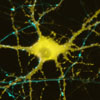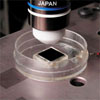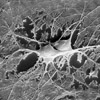|
    
Autism and Neuroligin 3
Autism spectrum disorders (ASD), are executive function deficits, or a dysfunction of higher cognitive processes. One of the fundamental problems in our quest to understand autism is that we do not know what brain functions are responsible for the deficits seen in social, emotional and other task-oriented behaviors. We thus still face the unanswered question: do gene mutations known to be associated with autism disrupt synaptic function, or does their relevance lie at a higher level, i.e. in perturbing connectivity between brain regions? Communication between more distant brain regions travels by way of the white matter; bundles of myelinated axons which can transfer information rapidly across long distances. Our lab has recently published a new discovery showing that a molecule (neuroligin 3) can regulate this process of white matter formation. This is extremely interesting, as mutations in neuroligin 3 have been found in patients with autism. We are actively pursuing this new link, and hope that new therapeutic strategies might someday arise from understanding the mechanisms at work.
RESOURCES
Proctor, D.T., Stotz, S.C., Scott, L.O.M, de la Hoz, C.L.R., Poon, K.W.C, Stys, P.K. and Colicos, M.A. (2015) Axo-Glial Communication Through Neurexin-Neuroligin Signaling Regulates Myelination and Oligodendrocyte Differentiation. Glia. Jun 29. doi: 10.1002/glia.22875. PubMed
|